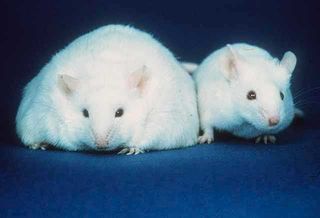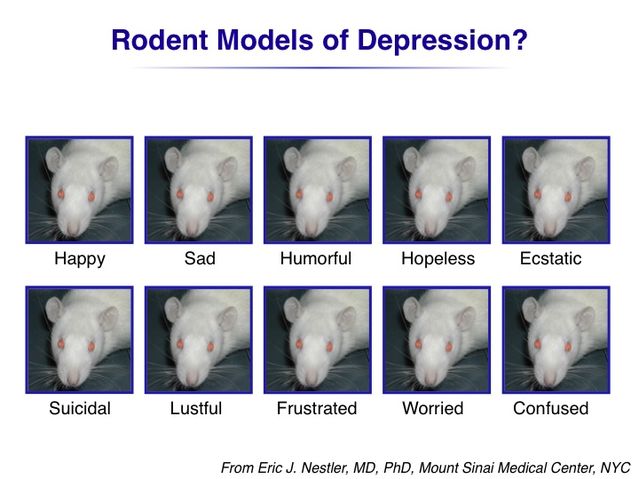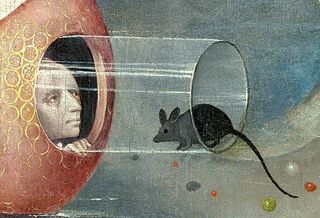Diet
The "Furry Test Tubes" of Obesity Research
The "intellectual leap" of translating science from mice to humans
Posted May 14, 2017

Mice function well as stand-ins for humans in our allegories. Most notably, Spencer Johnson’s bestseller, Who Moved My Cheese? (1998) recounted the tale of mice Sniff and Scurry to demonstrate the importance of anticipating change, recognizing the “handwriting on the wall,” and of being flexible when evidence of change is inevitable. On a more profound level, Art Spiegelman wrote the extraordinary, Pulitzer-Prize winning graphic novel Maus: A Survivor’s Tale (1973, 1986) that documents, using all cartoon figures of mice, his parents’ experiences during the Holocaust. How well, though, do mice serve as substitutes for humans in scientific research? The answer is a complex one.
It was the renowned 19th century physiologist Claude Bernard (Introduction to the Study of Experimental Medicine, 1865) who was one of the first to defend the use of animals for scientific research. Bernard thought it was “wholly and absolutely” the right of humans to experiment on animals, “even though painful and dangerous,” if that research benefited mankind. (Bernard, in Otis, Literature and Science in the 19th Century, 2002, p. 206) This belief differed with Bernard’s view of human experimentation, “The principle of medical and surgical morality, therefore, consists in never performing on man an experiment which might be harmful to him to any extent, even though the result might be highly advantageous to science.” (Otis, p. 205) The Nazi physicians of the 1940s, prosecuted and convicted at Nuremberg (Annas and Grodin, The Nazi Doctors and the Nuremberg Code, 1992), of course, in sharp contrast, engaged in practices that were “a frightening example of medicine gone wrong” (Annas and Grodin, p. 3) and subjected their human subjects “to conditions that would violate current animal research regulations, let alone human regulations.” (p. 197)
As a result of the ethical considerations of using humans in research, scientists have focused throughout the years on creating animal models as substitutes. “The use of animals for research is a privilege granted to scientists with the explicit understanding that their use provides significant new knowledge without causing unnecessary harm.” (Bailoo et al, Institute for Laboratory Animal Research, ILAR Journal, 2014) There is, though, “shockingly poor translation of basic animal work into human outcomes,” writes Garner (ILAR Journal, 2014), who adds, “The secret to using animal models is to understand their limitations.” Garner et al (Lab Animal, NY, 2017) have coined the term therioepistemology as a new discipline of how knowledge is gained from animal research. These researchers note that there can be considerable failure in this translation: for example, only one in nine drugs that are used in human trials will succeed despite that all of these drugs “worked” in an animal model. One devastating example occurred years ago with thalidomide, which caused only peripheral neuritis in animals but caused the severe birth defect of phocomelia (deformed limbs) in infants whose mothers were prescribed the drug during their pregnancy. (Rohra et al, Journal of the College of Physicians and Surgeons, Pakistan, 2005)

Sjoberg (Behavioral and Brain Functions, 2017) explains that researchers who use animal models may become susceptible to the fallacy of false analogy: assuming there are necessarily similarities between animals and humans and arrive at incorrect conclusions. Says Sjoberg, "Animal experiments are reconstructions, not replications, since animals cannot follow instructions." Results, though, can sometimes be extrapolated to humans.

Today, in obesity research, rodents, and in particular, mice, (i.e., murine models) have become the animal of choice for much of scientific investigation. Says Richard Harris (Rigor Mortis, 2017), “One reason everybody uses mice: everybody else uses mice…scientists have developed hundreds of inbred strains of mice…entire industries have grown up around the breeding, shipping, housing, feeding and care of mice.” (p. 74) “The house mouse is an extraordinary animal …mice have followed us around the globe and colonized almost every environment humans ever created without the benefit of language, tools, or clothes.” (Garner, 2014)
Mice are relatively easy to study because they have high reproductive rates, a short life cycle, and low maintenance costs relative to other mammals. (Nguyen et al, Disease Models & Mechanisms, 2015; Maloney et al, Physiology, Bethesda, 2014) But many variables can affect their functioning, including the environment of their cages, (e.g. bedding material and how often it is changed), the position of the cage from the ceiling (i.e., mice vary in their level of fear, abnormal behavior, and immune suppression according to their position in the cage rack), the gender of their handlers (e.g. more aggressive and stressed with male researchers); the strain of mice used, and how many mice are in each cage. (Garner et al, 2017; Slattery and Cryan, Psychopharmacology, Berlin, 2017) Because mice are nocturnal animals, with their inactive period during our daytime, even the amount of light to which they are subjected may be a factor. Further, the temperature at which mice are housed is important: most experiments on mice are conducted at temperatures well below where they are most comfortable (i.e., below their thermoneutral zone) so that they are under “chronic thermal stress” such that they increase their metabolism and food intake by as much as 50%, spend more time awake with sleep deprivation, and have an increased heart rate, all of which can impact research results and interfere with reproducibility. (Lodhi and Semenkovich, Cell Metabolism, 2009; Maloney et al, 2014)
Garner et al (2017) also emphasize that researchers often ignore or fail to measure aspects of an environment that do not matter to humans; for example, mice have different sensory ranges from us, including ultraviolet and ultrasound frequencies we don't detect. We also tend to "over-engineer" their environments--with "standard chow, standard barren environments...which in turn make them fundamentally abnormal" for mice. It then becomes "easy to fall into the trap of thinking of them as little more than furry test tubes rather than animal patients." (Garner et al, 2017) Bailoo et al (2014) note that keeping everything constant--the gold standard of experimental design-- works so well in the pure sciences like math or physics but may result in the standardization fallacy with mice: homogenization, "contrary to customary wisdom" may compromise the study.

And we tend to ignore human biology "through reductionism:" we create monogenic mutations when rarely are our human diseases the result of only one gene. (Garner et al, 2017) For example, Asrafuzzaman et al (Biomedicine & Pharmacotherapy, 2017) explain that type 2 diabetes is a human, not an animal disease, and develops from a combination of environmental factors and polygenic mutations. When we create an obese mouse with abnormal insulin levels and insulin resistance, we have altered one gene (e.g. ob/ob mouse with leptin deficiency.) These mice develop their abnormalities early on, whereas humans can develop type 2 diabetes at any time and often more likely with age. (Wang et al, Current Diabetes Reviews, 2014)

Further, many experiments done with mice fail to employ proper scientific technique. Ribaroff et al (Obesity Reviews, 2017) conducted a comprehensive meta-analysis of 171 papers that used animal models and found only 31% of those papers explicitly mentioned that the animals had been randomized, and none mentioned that the experimenters were blind to the interventions or treatment exposures. In marked distinction to the inadequate design of many other investigators, Allison and his colleagues (Cope et al, International Journal of Obesity, London, 2005), exploring the link between atypical antipsychotic medication and weight gain, reported all the important experimental parameters (e.g. randomization, blinding, mouse strain, etc.) clearly and in great detail, including the importance of oral administration, rather than intraperitoneal or subcutaneous injections, to deliver medication less stressfully.
Bottom line: There is no perfect animal model for many of our human diseases. Using mice, for example, may require an intellectual leap or even an anthropomorphic leap when we cannot ascertain the animal's psychology, i.e., the why behind an animal's behavior, explain Nestler and Hyman, who study neuropsychiatric disorders like depression (Nature Neuroscience, 2010) They add "...it is hard to imagine significant progress in pathophysiology or therapeutics without good animal models" That is the challenge researchers face, but good experimental design obviates some of the inherent limitations and enables the possibility of valid and reproducible scientific results.
Special thanks to Professor Eric J. Nestler, MD, PhD, of Mt. Sinai Medical Center, for generously sharing his slide "Rodent Models of Depression?"
For those interested in an excellent summary of research involving mice, see Richard Harris's chapter, Misled by Mice, in his new book Rigor Mortis.





